Click here and press the right key for the next slide (or swipe left)
also ...
Press the left key to go backwards (or swipe right)
Press n to toggle whether notes are shown (or add '?notes' to the url before the #)
Press m or double tap to slide thumbnails (menu)
Press ? at any time to show the keyboard shortcuts
A Limit on Goal Tracking in the First Nine Months
limit:
infants in their first nine months of life
can only track the goals of an action
if they can perform a similar enough action
around the time the action occurs.

Flanagan and Johansson, 2003 figure 1 (part)
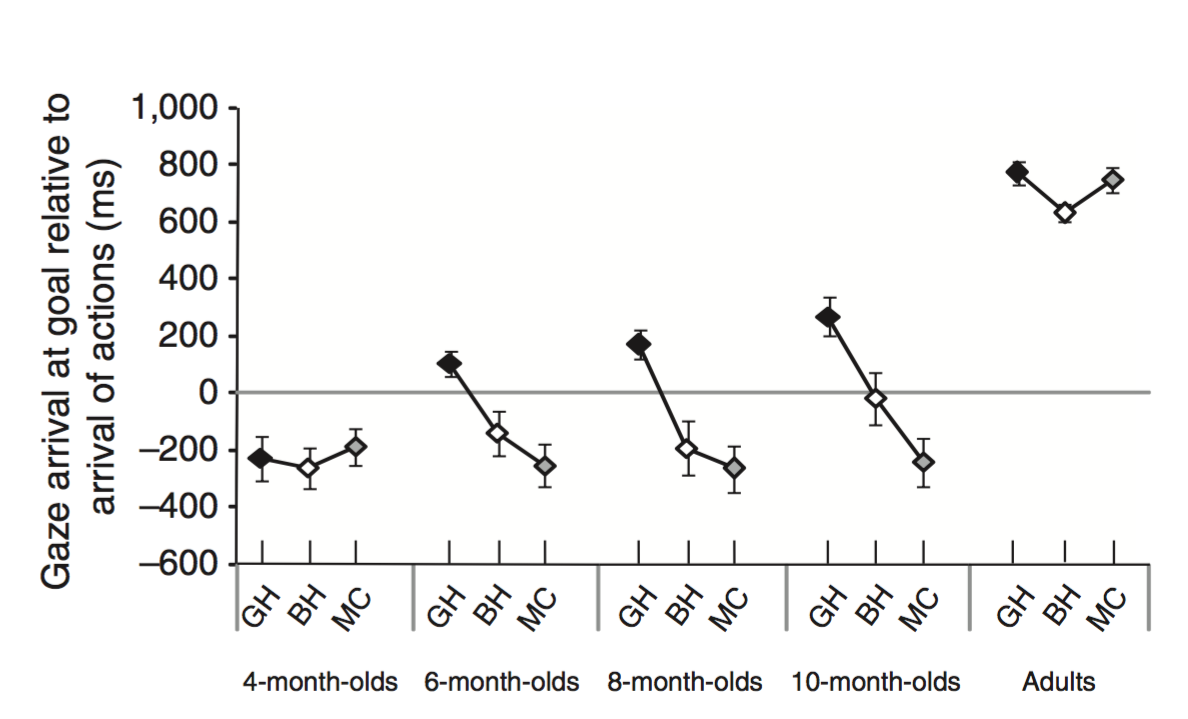
Kanakogi and Itakura, 2011 figure 1
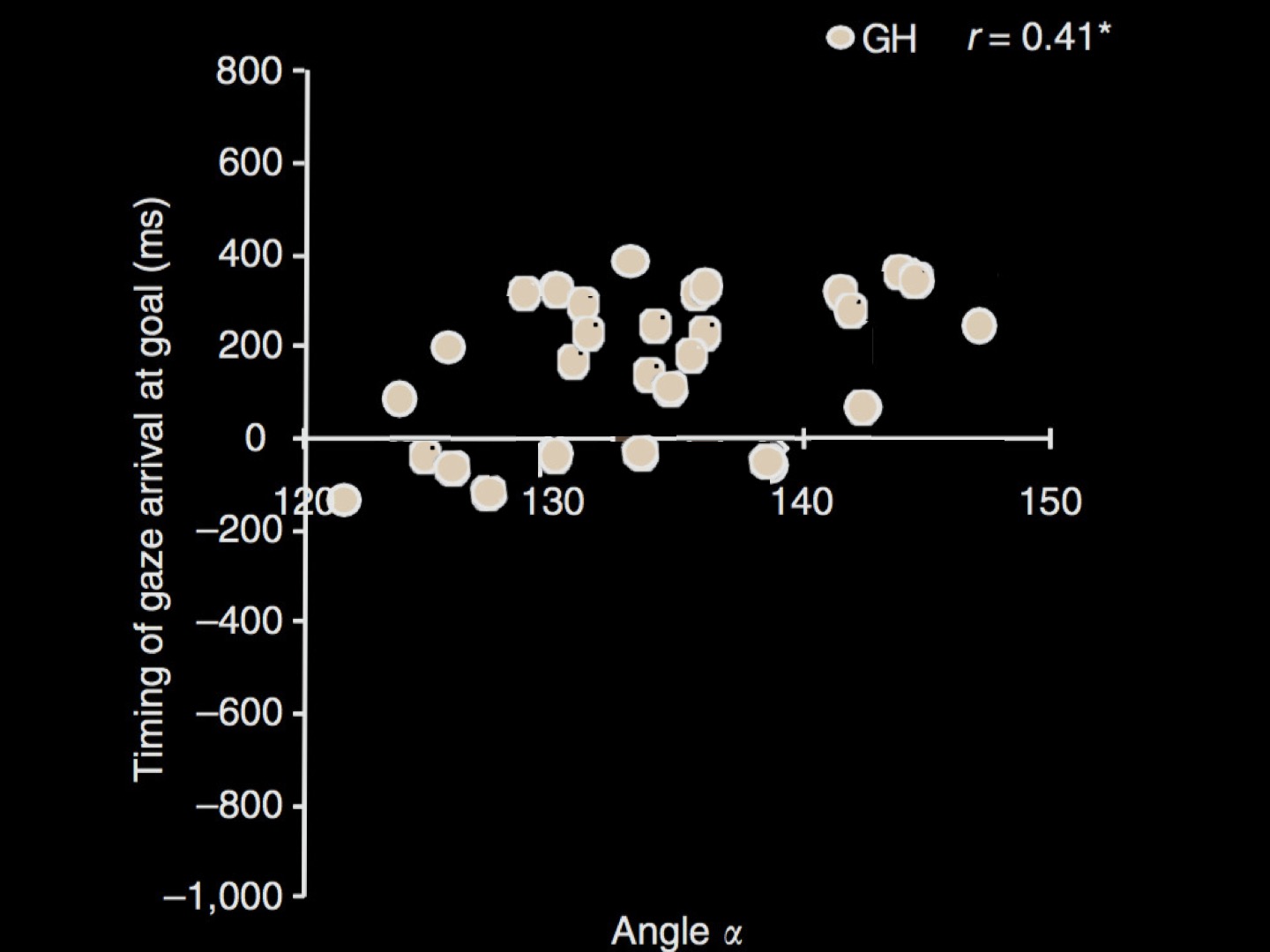
Kanakogi and Itakura, 2011 figure 5 (part)
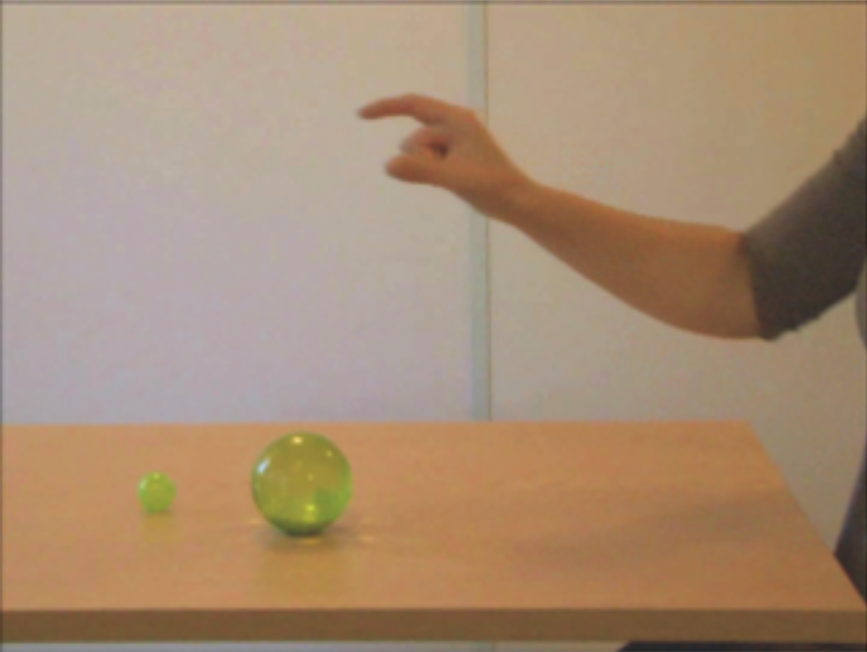
Ambrosini et al, 2013 figure 1 (part)
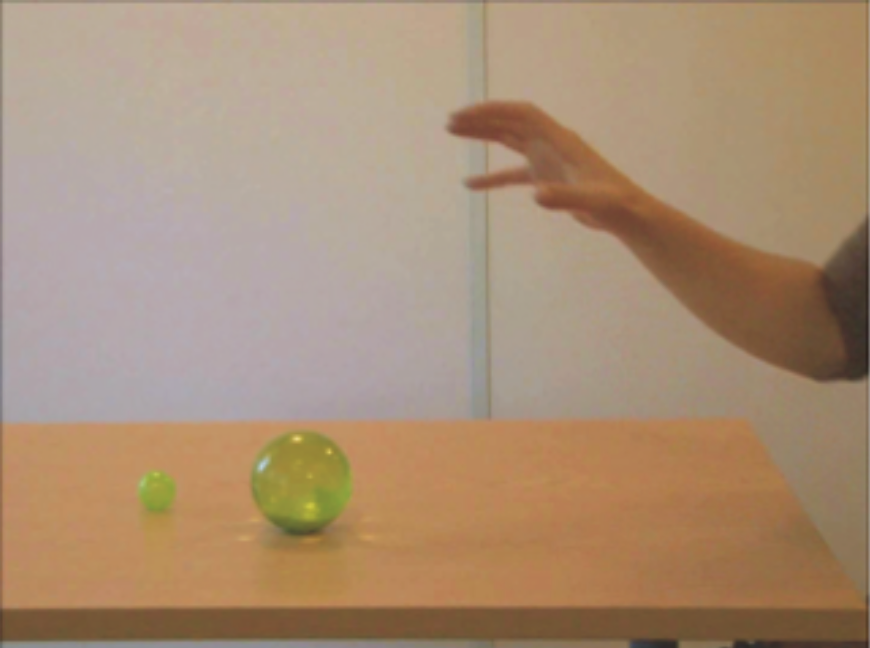
Ambrosini et al, 2013 figure 1 (part)
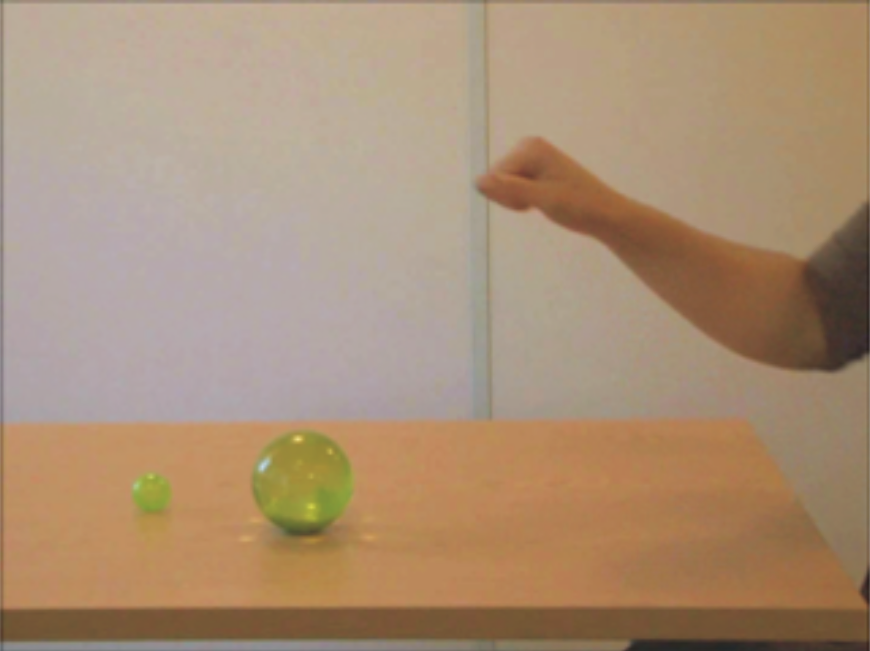
Ambrosini et al, 2013 figure 1 (part)

Ambrosini et al, 2013 figure 3
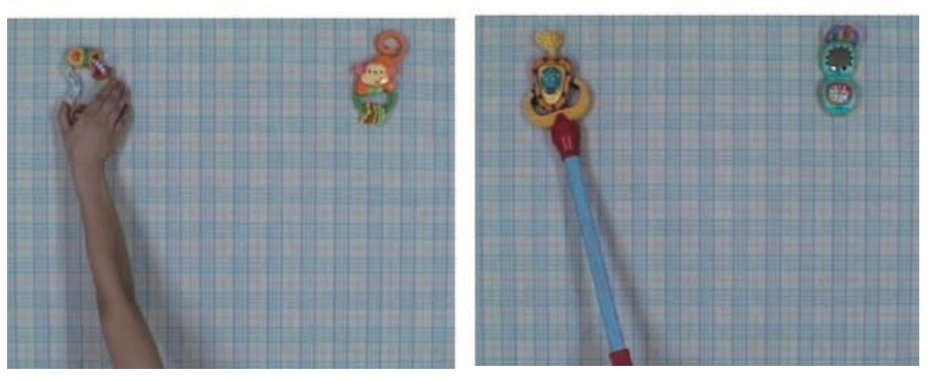
Kanakogi and Itakura, 2011 figure 1C (part)

Kanakogi and Itakura, 2011 figure 5
If infants can only track goals of actions they can perform, what happens if you intervene on their abilities to act?
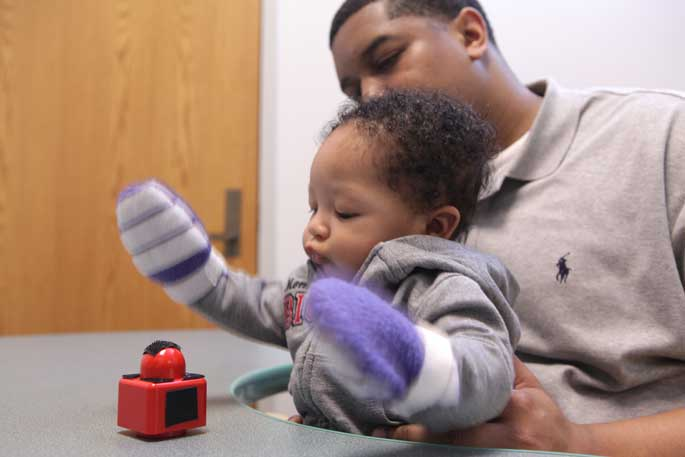
Needham et al, 2002 / https://news.vanderbilt.edu/files/sticky-mittens.jpg
Sommerville, Woodward and Needham, 2005
Play wearing mittens then observe action.
vs
Observe action then play wearing mittens.
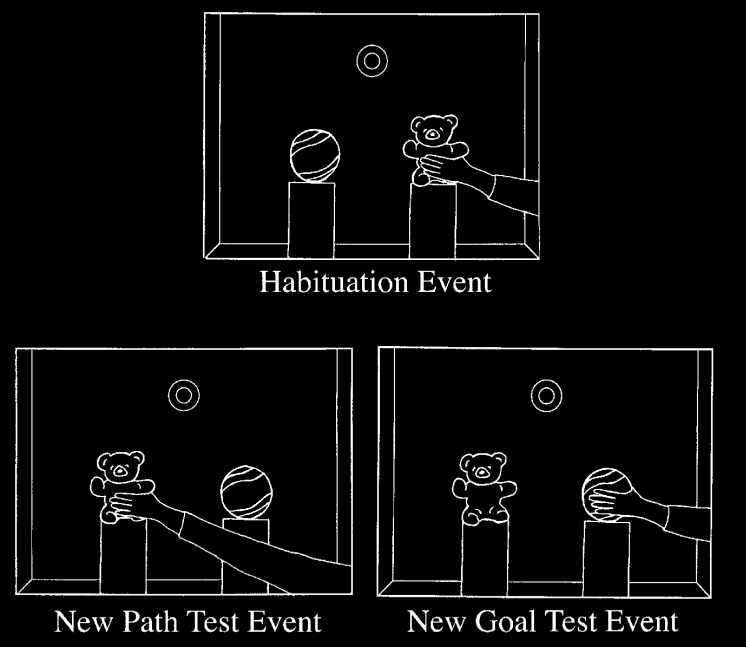
Woodward et al 2001, figure 1

Sommerville, Woodward and Needham, 2005 figure 3
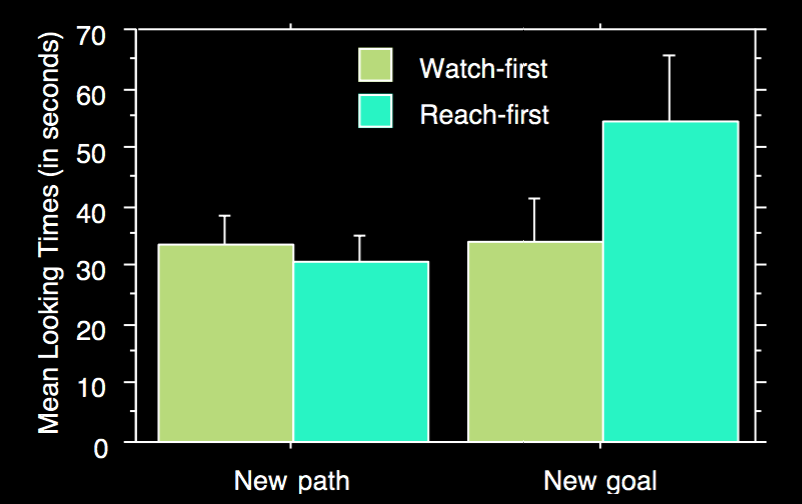
Sommerville, Woodward and Needham, 2005 figure 3
objection
It’s not really grasping
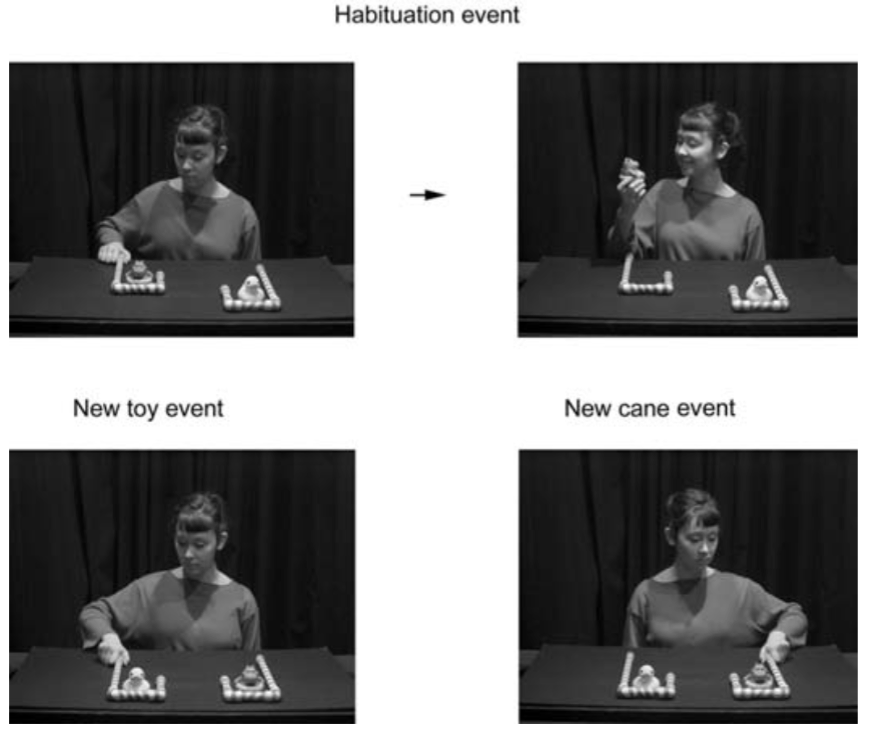
Sommerville et al 2008, figure 1
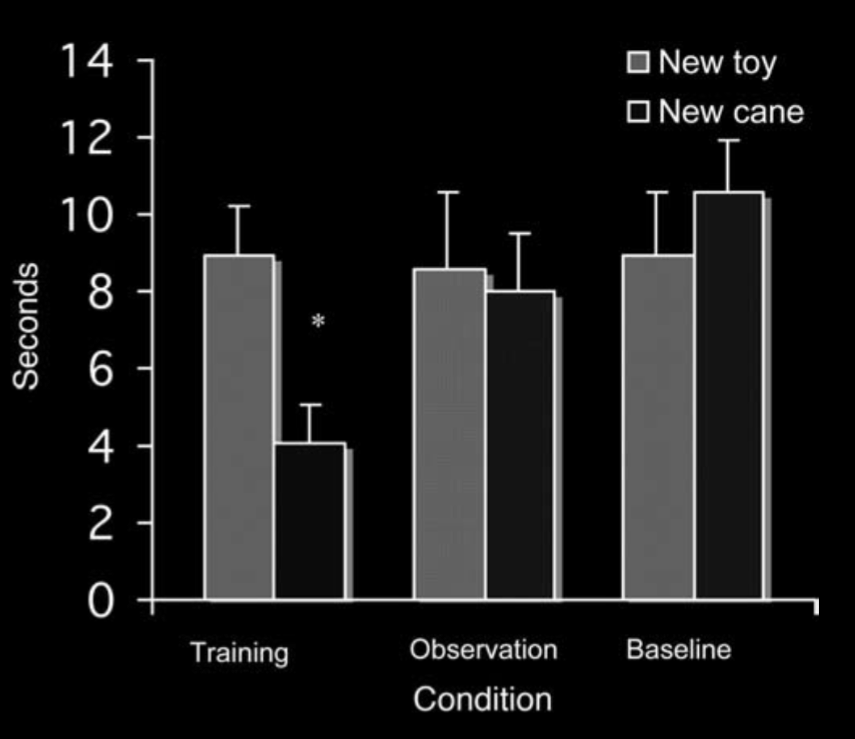
Sommerville et al 2008, figure 2
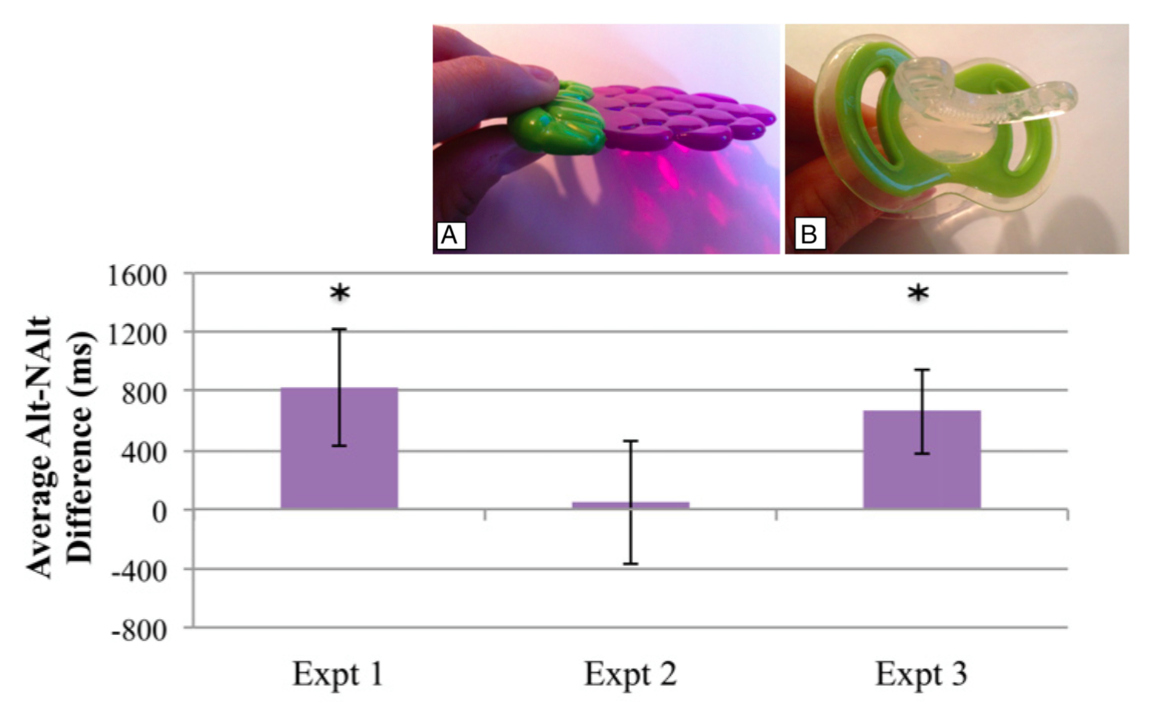
Bruderer et al, 2015 figures 1, 4
limit:
infants in their first nine months of life
can only track the goals of an action
if they can perform a similar enough action
around the time the action occurs.
Why?
In infants (and adults),
goal-tracking is limited by their abilities to act.